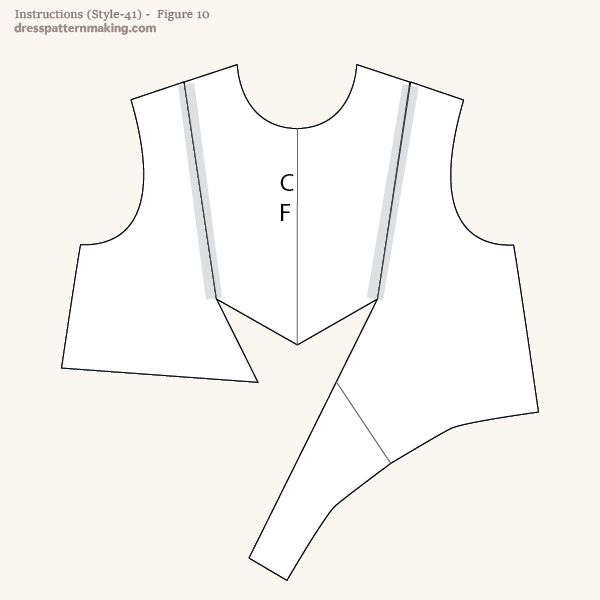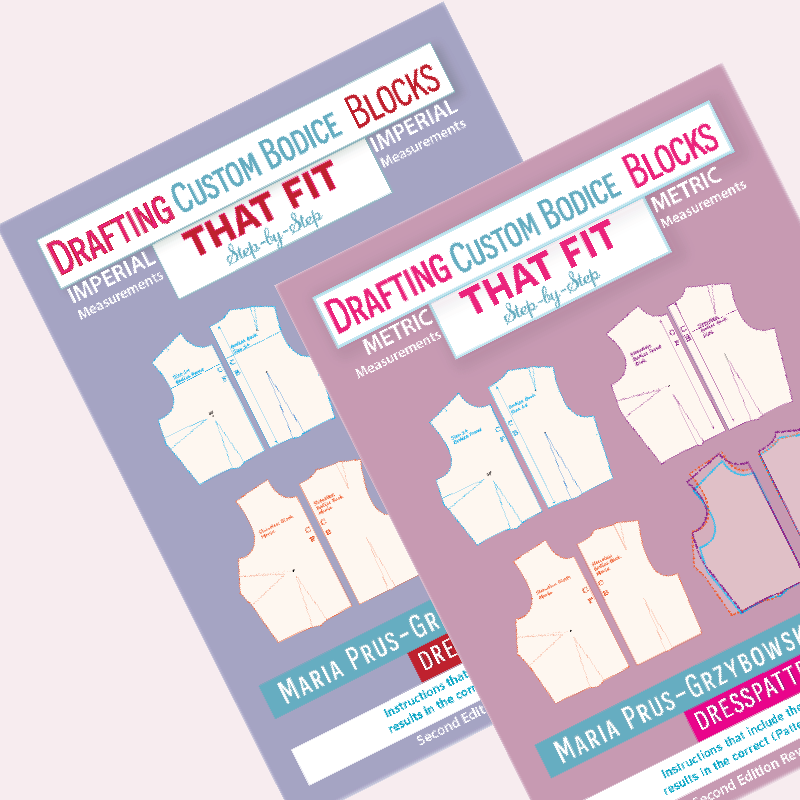Bodice Front Style 41
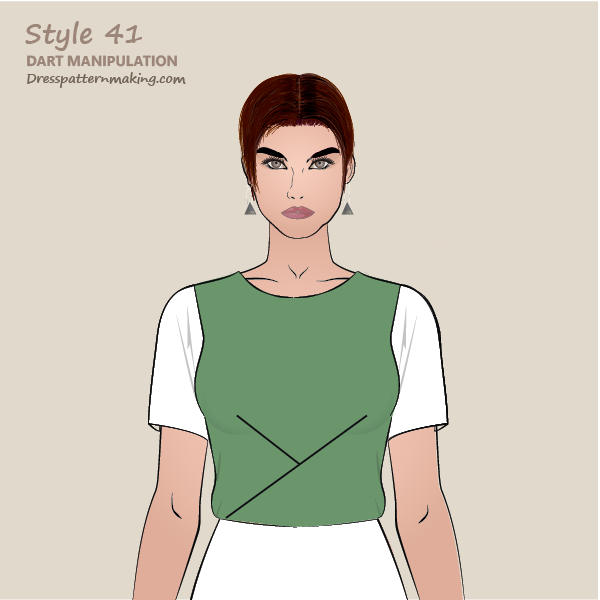
The bodice of this garment has two asymmetric darts. The dart on the left runs from the Bust Point to the CF . The dart on the right runs from the Bust Point to the side seam on the opposite side of the full-block. This creates a Y shape style-line.
Example: Outcome
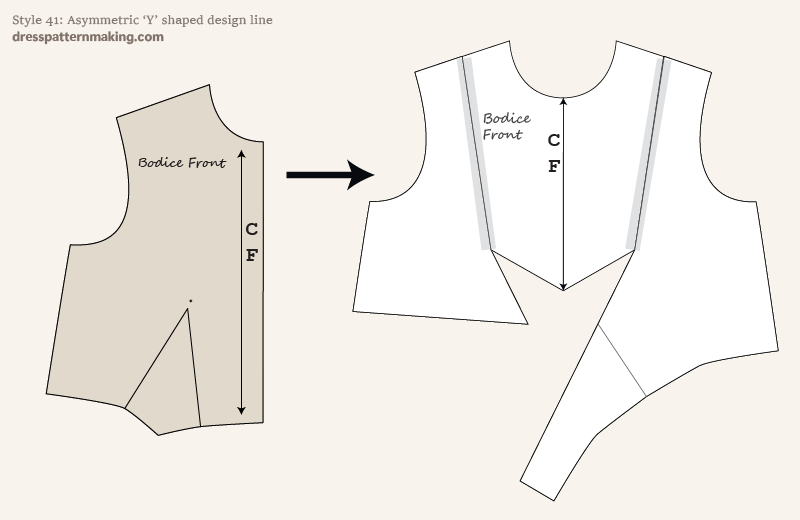
Figure B shows the block being used on the left (1-Dart Block), and the pattern that will be created (Style 41) on the right.
The focus of these instructions is covering the theory and practice of manipulating darts and the exercise finishes after the dart manipulation has been done. For production ready patterns you would need to take further steps to add seam allowance, pattern labels, pattern piece numbers, the grainline, etc.
Overview; how to approach this manipulation
This style will be created by
- pivoting the full dart value into the mid-shoulder,
- turning the block over and doing the same for the mirror half-block,
- drawing the darts on the full block,
- then using the cut-and-spread method to finish creating the pattern.
Instructions (Style-41) - Figure 1
You can use either the 1-Dart or 2-Dart Block for this style. I will be using the 1-Dart Block.
- Draw a style-line from the mid-shoulder to the bust point, in preparation for pivoting the dart into the shoulder
- Trace the half-block and move the waist dart into the shoulder
- Make sure you mark the Bust Point.
*Moving the waist dart of the 1-Dart Block into the mid-shoulder is only indicated in the image, it is not covered in step-by-step detail. This is because this is basic dart manipulation which you should be able to do yourself by this stage. If you are unsure of how to do this, revise Styles 01 - 16.
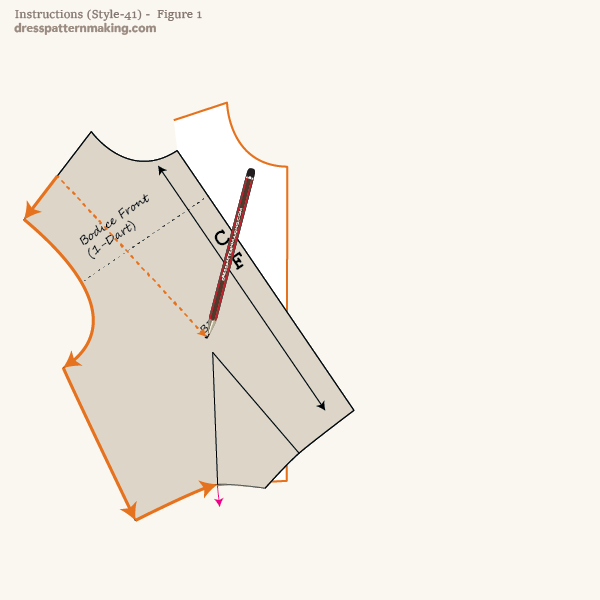
Instructions (Style-41) - Figure 2
- Draw the dart legs to the Bust Point. You do not need to finish off the dart or create a dart point.
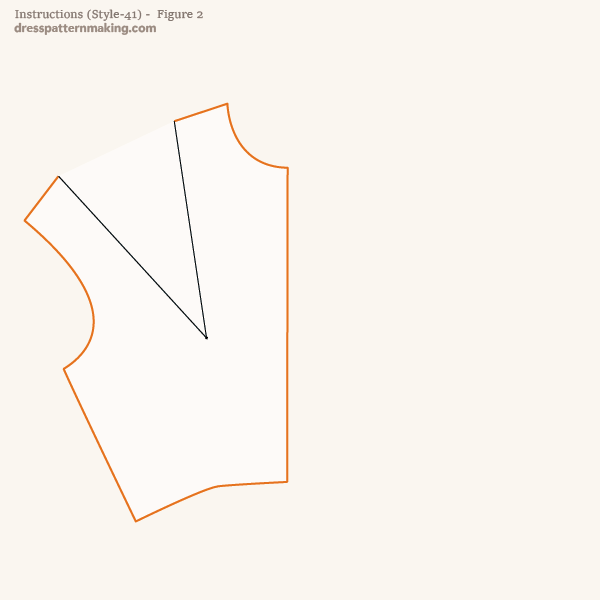
Instructions (Style-41) - Figure 3
- Turn the block over, lining up the CF, and pivot the waist dart into the shoulder.
- Mark the Bust Point.
- Mark the dart legs.
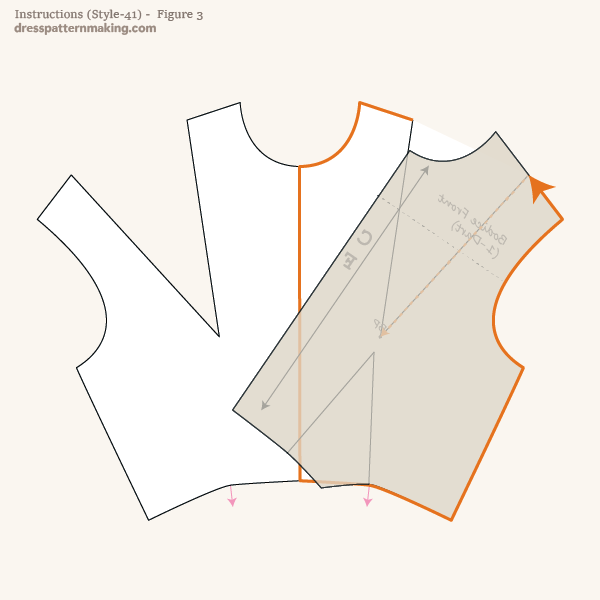
Instructions (Style-41) - Figure 4
- Draw the dart legs as per the flat; a style-line from the right Bust Point to the opposite side seam (shown in orange), and a style-line from the left Bust Point to meet the first line at the CF (shown in green).
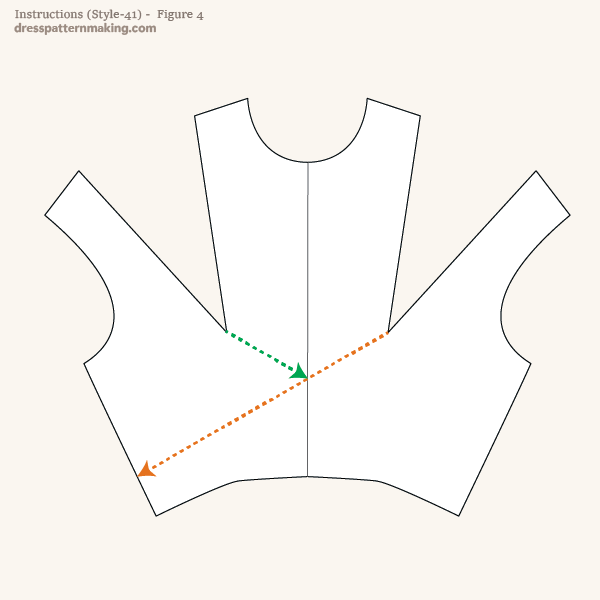
Instructions (Style-41) - Figure 5
- Cut along the design line, from A to B, leaving a small hinge at point B.
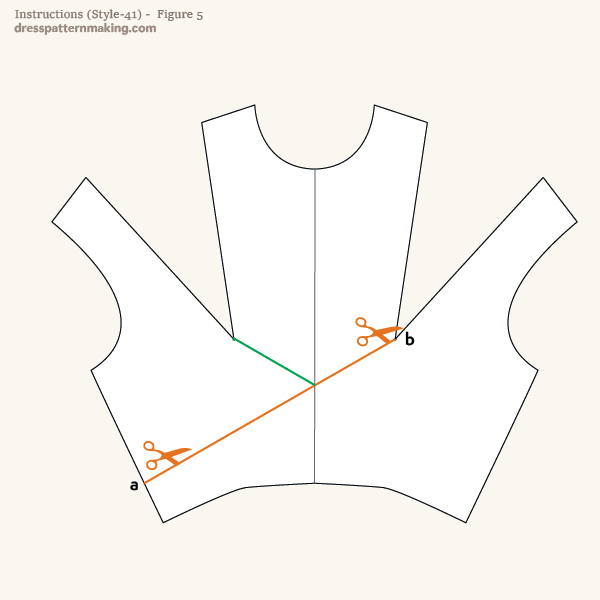
Instructions (Style-41) - Figure 6
- Close the shoulder dart.
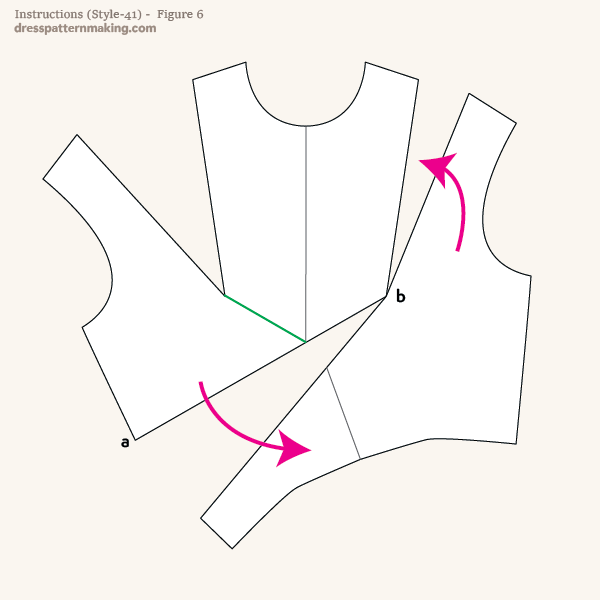
Instructions (Style-41) - Figure 7
- Pivot the right shoulder dart closed. Secure with tape.
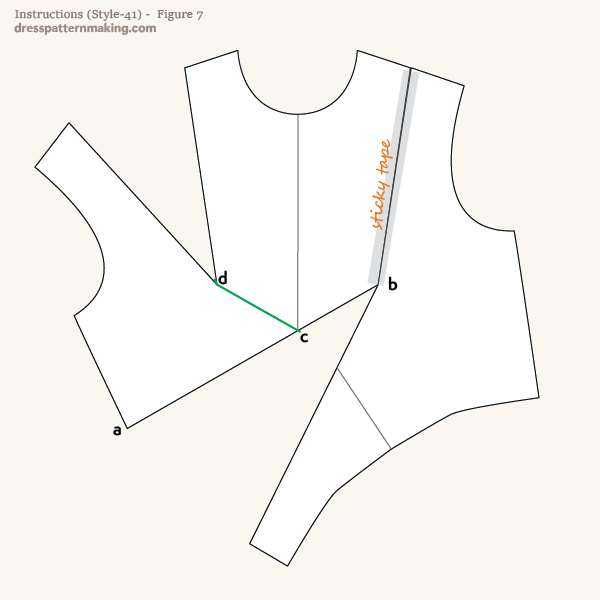
Instructions (Style-41) - Figure 8
- Cut along the second dart line, from C to D (shown by the green line).
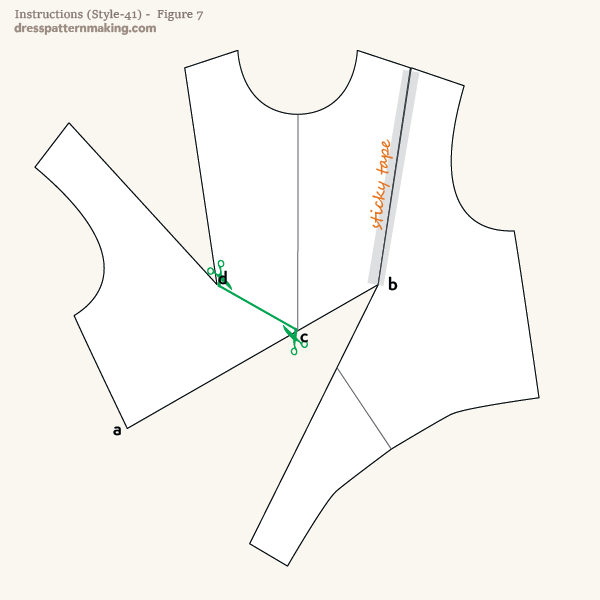
Instructions (Style-41) - Figure 9
- Pivot the left shoulder dart closed (pivot on Bust Point D), and secure with tape.
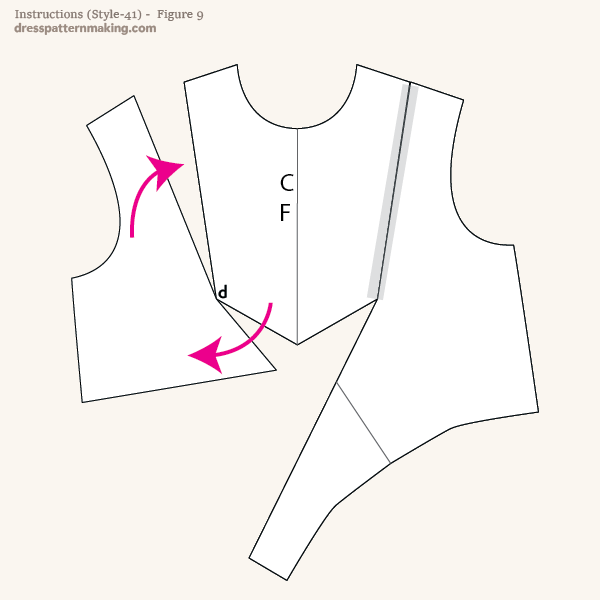
Instructions (Style-41) - Figure 10
- This is the outcome of the dart manipulation.
For a production ready pattern, you would need to add seam allowance, etc.
